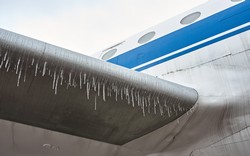Advanced design tools to counteract ice formation on aeroplane parts
Bleeding hot air for extraction from the engine is the traditional approach used to tackle in-flight icing. However, this process consumes large amounts of power. The electrical wing ice protection system (WIPS) is a relatively new method for wing ice protection that avoids the use of bleed air from the engines. With this in mind, the EU-funded MULTYCAB(opens in new window) (Power cable modelling for WIPS electromechanical chain) project aimed at developing a design tool for power cables that transports energy into an aeroplane. Project partners researched and developed advanced power cable models for aeronautical applications, specifically for the thermo-electric WIPS. The tool is optimised for electric cables, allowing for a more rapid design with better performance than existing solutions. It also significantly improves the analysis of power cable models for the WIPS while minimising design errors. The design takes into account the new challenges for cable operation because of the high frequency associated with switched electronic converters. Specifically, the MULTYCAB team developed and validated a general methodology for high frequency power cable models based on analytical studies of lumped model cells, experimental measurements and characterisation, and an approach for fitting the lumped cell parameters. It also developed an overall structure of the lumped parameters' high frequency cable model for the basic two and three unshielded conductors. To manage the entire procedure, scientists created two specific graphical user interfaces. MULTYCAB's developed tools will enable the WIPS to operate more securely while improving safety concerning electrical behaviour and disturbances for high frequency switching at power supplies. The project is also in line with the environmental targets of the Strategic Research Agenda for aeronautics in Europe and Clean Sky's fuel consumption, emissions and noise reduction objectives.







